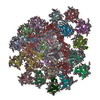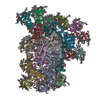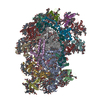+Search query
-Structure paper
| Title | Structures and organizations of PSI-AcpPCI supercomplexes from red tidal and coral symbiotic photosynthetic dinoflagellates. |
|---|---|
| Journal, issue, pages | Proc Natl Acad Sci U S A, Vol. 121, Issue 7, Page e2315476121, Year 2024 |
| Publish date | Feb 13, 2024 |
 Authors Authors | Xiaoyi Li / Zhenhua Li / Fangfang Wang / Songhao Zhao / Caizhe Xu / Zhiyuan Mao / Jialin Duan / Yue Feng / Yang Yang / Lili Shen / Guanglei Wang / Yanyan Yang / Long-Jiang Yu / Min Sang / Guangye Han / Xuchu Wang / Tingyun Kuang / Jian-Ren Shen / Wenda Wang /   |
| PubMed Abstract | Marine photosynthetic dinoflagellates are a group of successful phytoplankton that can form red tides in the ocean and also symbiosis with corals. These features are closely related to the ...Marine photosynthetic dinoflagellates are a group of successful phytoplankton that can form red tides in the ocean and also symbiosis with corals. These features are closely related to the photosynthetic properties of dinoflagellates. We report here three structures of photosystem I (PSI)-chlorophylls (Chls) /-peridinin protein complex (PSI-AcpPCI) from two species of dinoflagellates by single-particle cryoelectron microscopy. The crucial PsaA/B subunits of a red tidal dinoflagellate are remarkably smaller and hence losing over 20 pigment-binding sites, whereas its PsaD/F/I/J/L/M/R subunits are larger and coordinate some additional pigment sites compared to other eukaryotic photosynthetic organisms, which may compensate for the smaller PsaA/B subunits. Similar modifications are observed in a coral symbiotic dinoflagellate species, where two additional core proteins and fewer AcpPCIs are identified in the PSI-AcpPCI supercomplex. The antenna proteins AcpPCIs in dinoflagellates developed some loops and pigment sites as a result to accommodate the changed PSI core, therefore the structures of PSI-AcpPCI supercomplex of dinoflagellates reveal an unusual protein assembly pattern. A huge pigment network comprising Chls and and various carotenoids is revealed from the structural analysis, which provides the basis for our deeper understanding of the energy transfer and dissipation within the PSI-AcpPCI supercomplex, as well as the evolution of photosynthetic organisms. |
 External links External links |  Proc Natl Acad Sci U S A / Proc Natl Acad Sci U S A /  PubMed:38319970 / PubMed:38319970 /  PubMed Central PubMed Central |
| Methods | EM (single particle) |
| Resolution | 2.7 - 2.99 Å |
| Structure data | EMDB-36678, PDB-8jw0: EMDB-36742, PDB-8jze: EMDB-36743, PDB-8jzf: |
| Chemicals |  ChemComp-CLA: 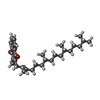 ChemComp-PQN:  ChemComp-LHG:  ChemComp-BCR:  ChemComp-SF4:  ChemComp-LMG:  ChemComp-DGD:  ChemComp-DD6: 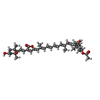 ChemComp-PID: 
ChemComp-UIX: 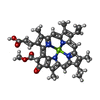 ChemComp-KC1:  ChemComp-SQD: |
| Source |
|
 Keywords Keywords |  PHOTOSYNTHESIS / Photosysrem I / PHOTOSYNTHESIS / Photosysrem I /  Dinoflagellate Dinoflagellate |
 Movie
Movie Controller
Controller Structure viewers
Structure viewers About Yorodumi Papers
About Yorodumi Papers




